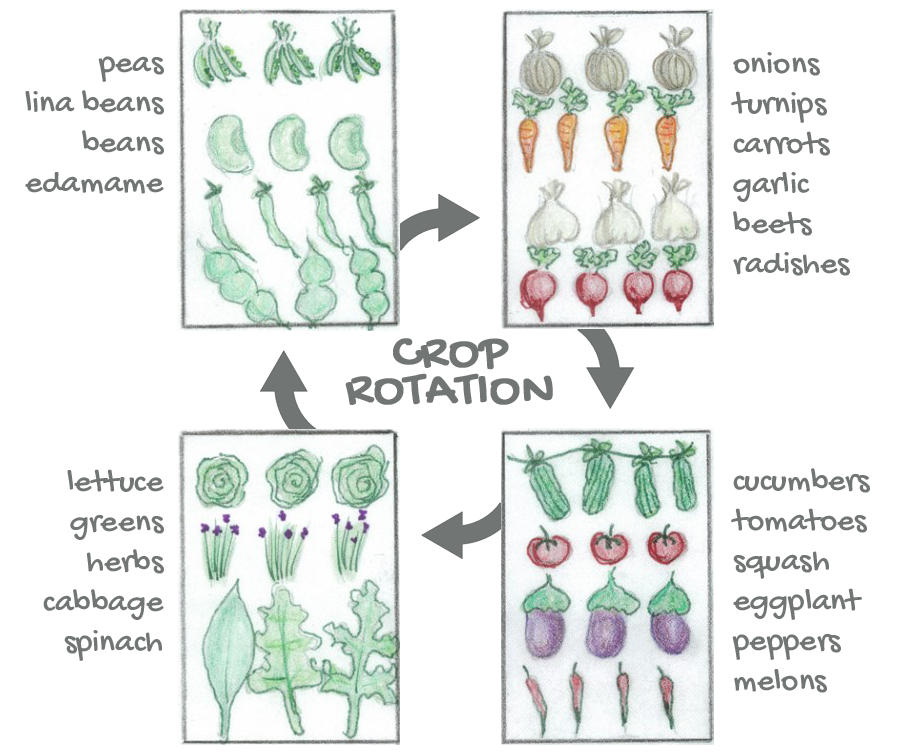A Crop Rotation Plan Can Improve Your Soils Health For An Abundant Harvest
If you have been gardening for long you may have come across having a bumper crop (a crop that has yielded an unusually productive harvest) one year and a barren crop the next year. You may have told yourself that it was just a bad year for that particular vegetable, you most likely what your garden was experiencing a result of soil depletion.
Every plant has its own nutritional needs. As plants grow they draw valuable nutrients from the soil. When these nutrients are used faster than nature can replace them the soil becomes depleted and unable to perform as it once did. One of the secrets to preventing this from happening is following a properly designed crop rotation plan.
What Is a Crop Rotation Plan
In simple terms, a crop rotation plan is a systematic approach to deciding what plants to place in what section of your garden. Many people don’t realize that just as some plants require more of certain nutrients, there are other plants that will actually feed your soil and help you in maintaining your garden’s health.
Maintaining healthy soil is not only one reason you should practice crop rotations. Some other advantages that rotating crops can bring to your garden are:
- Increased disease resistance
- Easier insect control
- More nutritious vegetables
Developing a Crop Rotation Plan
The simplest way to develop a system of crop rotation is to think of what part of the plant you plan to eat.

Now, divide your garden into four sections. This year, plant each of your four sections in the order of the list above and follow the suggested rotation each year.
How Rotating Crops Really Works
Legumes such as beans and peas are known as nitrogen fixers. They actually draw nutrients from the air and their exposure to sunlight and help enrich the soil. They prefer to grow in loose soil so we plant them behind root crops that by their nature break up the soil.
Leafy greens are highly disease and insect resistance so they are used to help prevent the build-up of disease-causing organisms in the soil and as a barrier to help prevent insects from migrating from one section of the garden to another.
Fruits place the highest demand on soil so they are planted in the highest nutrients area and before the low demand root crops and soil-enriching legumes.
Following a crop rotation plan will go a long way towards keeping your garden healthy and your plants happy but it is not the end of the story. Over time the nutrients levels in your soil will still become depleted. Along with rotating crops, it is very important that you also remember to introduce quality organic matter in the form of compost and mulch to aid your soil in replenishing itself.
Posted in: Gardening
Leave a Comment (0) ↓